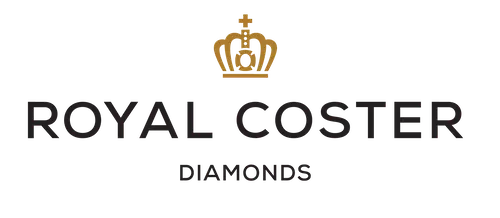How to use a loupe to evaluate diamonds?
To accurately view and evaluate a diamond, you first need to learn how to look properly through a magnifying glass. This trick is harder than it looks and goes as follows:
- - Hold the magnifying glass with your right or left hand as close as possible to one eye.
- - Keep both eyes open: with one eye closed, you aren’t able to see the depth of the diamond. Moreover, your eyes become less tired if you keep them both open.
- - Place your elbows firmly on the desk you’re working at.
- - Hold the loupe with your forefinger and thumb. With the little finger that is free, you can determine the distance to the diamond.
- - Move the diamond until you see it ‘crystal clear’.
It may take some time before you get the hang of it, but eventually, persistence pays off. Once you’ve succeeded to look correctly through the loupe, you can evaluate
the shape of the diamond, the color, and
the purity. A loupe is also a very useful tool when you want to find out whether
a diamond is real or fake.
Different types of diamond loupes
There are many different types of magnifiers that diamond workers use at their craft of cutting, polishing and grading diamonds. The ones that are most often used are:
- Linen loupe
- Gemstone loupe
- Table loupe
- Saw- or standing loupe
Linen loupe or post stamp loupe
The linen loupe is known by many names, including post stamp magnifier. This magnifying glass is often used by designers as CMYK color loupe. Advantages of the linen magnifier are that it lies well in the hand and is easy to use. The magnifier can simply be put on the table without damaging the glass or the desk.
Gemstone loupe
The gems magnifier, also known as a folding loupe, is often viewed as the standard diamond loupe. Especially in the trade of diamonds, this kind of magnifier is part of the standard equipment. This diamond loupe is small, handy and provides a detailed image of the diamond without biases in the cutting. The vast majority of diamond workers carry this kind of small magnifying glass in their pockets at all times.
Standing loupe
Probably less convenient than the gemstone loupe, but adequate for sure. The standing loupe (or ‘table loupe’) is particularly useful when the diamond worker needs to keep his hands free. If he needs to sort diamonds by color, for example, it might come in hand to use a standing magnifying glass.
Saw loupe or tube loupe
The saw loupes look a lot like the gemstone loupes. As with the classic diamond magnifier, the saw loupe looks also a bit like a small magnifying tube. Whereas other diamond loupes often magnify 10x or more, this one only magnifies 2 to 5 times. Magnifying more is not necessary for this loupe. This loupe is also used for diamond cutting, not just polishing. With a saw magnifier, you can look at the diamond at a safe distance from the saw blade without damaging the saw or the lens.
What elements does a diamond loupe consist of?
The lens of a diamond magnifier is made of optical glass or quartz glass, which is adapted to prevent achromatic discoloration. This can be done by grinding the glass in a certain way or using a combination of different lenses. This way you will always be able to see the true color of the diamond. The material in which the lens is put in must be solid, preferably metal. Metal is the strongest material, user-friendly and is durable. Regardless of the type of lens you use, metal is always preferred.
Microscope for diamond evaluation
Then there is the microscope. This is used to look for the smallest imperfections in the diamond and to review certain characteristics of the diamond. The microscope is not used for processing the diamond. A microscope is only used for the evaluation of diamonds that are already cut. With a microscope, you are able to look even deeper into the diamond to find even the smallest impurities and damages. For official and certified valuation of diamonds, a 10x magnification is the official standard. According to the official rules for diamond valuation, a microscope cannot be used to grade diamonds. However, due to the increased demand for perfection, microscopes are being used more and more often.
Evaluating a diamond with a loupe yourself?
The diamond rating takes a lot of work and looking through the loupe correctly is an art in itself. In our
Diamond Masterclass, you learn to use the diamond magnifiers correctly and evaluate diamonds based on the
4 C's. You learn how to cut a diamond – which you can keep of course. The Masterclass is a must for anyone who wants to learn more about diamonds and who wants to sit on the cutting table themselves. Read more about
the Diamond Masterclass at Royal Coster Diamonds.

